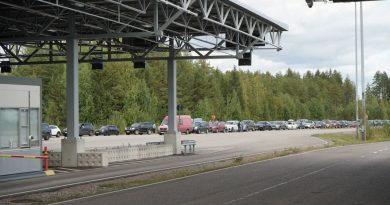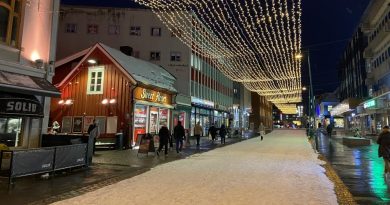Blog: Glasgow outcome – A COP-out for the Arctic, and the rest of the planet
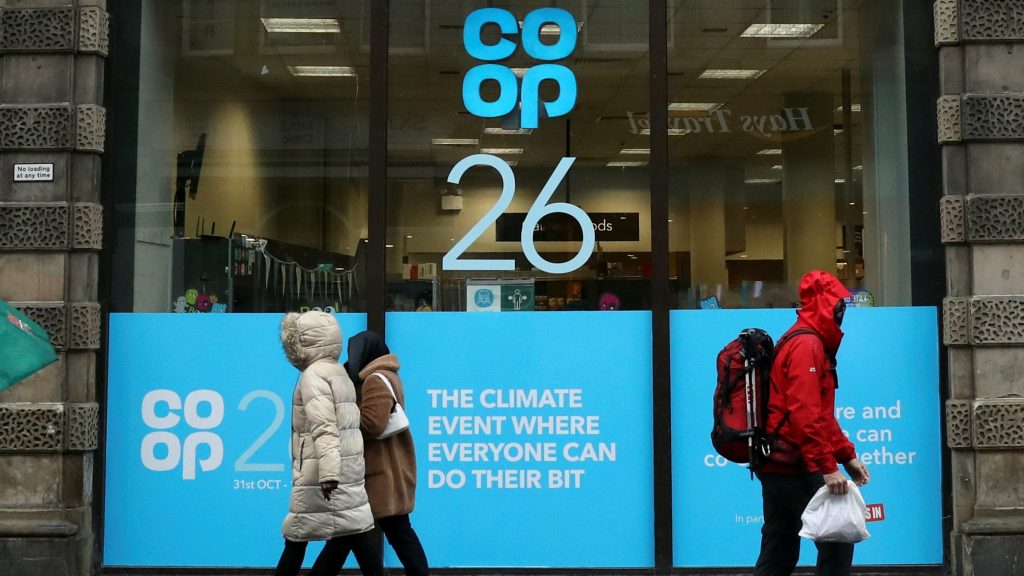
My expectations for COP26 were not high. What we needed to come out of it was huge.
But at the latest when the G20 leaders meeting in Rome ahead of the Glasgow conference failed to agree on a commitment to achieve net zero carbon emissions by 2050, it was looking highly unlikely that we would see the improved targets – and concrete plans for reaching them – that the world would need to keep global warming to 1.5°C.
“World leaders at COP26 must set aggressive goals for emissions reductions – nothing short of 50% greenhouse gas reductions by 2030 and net zero targets by 2040 is sufficient”, was how Dr. Wendy Broadgate, Future Earth Global Hub Director, Sweden, put it, as she and other leading researchers presented Patricia Espinosa, Executive Secretary of the UN climate body, UNFCCC, a report in Glasgow, 10 New Insights in Climate Science 2021.
“Whilst we are rapidly running out of time to limit climate change, this report shows that stabilizing at 1.5°C is still possible, but only if immediate, and drastic global action is taken”, she said.
That did not happen. Instead, the COP26 delegates who negotiate our future were sent off with more homework, and told to come back with better promises next year. That is not good enough. A watering down of commitment to funding adaptation in developing nations adequately and more procrastination on compensating for “loss and damage” leave those most badly affected – by a development they did not cause – with a sense of frustration, helplessness, anger.
Not Glasgow’s failure
I wouldn’t say the Glasgow COP in particular was a failure. I don’t believe this year’s meeting –wherever it had been held – could have come up with radically different results – under the circumstances. The parameters would have had to be different, the world’s big players ready not only to pledge but to implement the necessary measures to avert catastrophic warming.
There is certainly change in the air. The world has never been so clear about human-made global warming and the urgency of the situation (in theory). We’ve all been feeling the effects.
Aside from the repeatedly watered-down final statement, things did happen that signal change and give hope for a greener future – eventually. More than 100 countries agreed to a scheme to slash methane emissions by 2030. Unfortunately the big emitters China, Russia and India haven’t signed up. More than 100 countries promised to stop deforestation by 2030. And around 450 financial organisations agreed to shift funding away from fossil-fuel-burning industries into renewable energies and clean technologies.
At the coal face
More than 40 countries agreed to shift away from coal – unfortunately not big coal users like Australia, China, India and the USA. And – however hard to believe it may seem – for the first time this illustrious annual gathering actually mentioned the “C”-word in its final agreement, and only after a last-minute controversy, with India in particular trying to block its inclusion. In the end, “phasing down” was the fudged expression that replaced “phasing out”. I’m not sure whether this will, as some have said, go down as the meeting that tolled the death knell for coal. With the world’s biggest emitters USA, China and India still hanging on in there, we still have a long way to go. Another watering down of the original conference closing draft leaves open the loophole of continuing to mine and burn coal using technology like carbon capture and storage. The original proposal to phase out fossil fuel subsidies was weakened to “ineffective” subsidies. Plenty of room for interpretation there.
The USA and China announced that they will work together on climate protection in spite of their other major differences.
These developments aside of the formal UN negotiation process show that the world is beginning to alter its direction. But given the current state of the planet, this is all way too slow.
“We need pledges to be implemented. We need commitments to turn concrete. We need actions to be verified.”
— @antonioguterres says announcements at #COP26 are encouraging but far from enough. https://t.co/GEXgDYBGmu pic.twitter.com/mQzwxjmyRB
— United Nations (@UN) November 11, 2021
Melting ice, rising seas
Yet, the science is clear. Let me focus on the Arctic. The region at the top of the world is warming three times faster than the planet as a whole. And it has become (with a few truth-resistent exceptions) general knowledge that that is not only significant for remote northern communities and the iconic polar bears.
At the start of the COP, the International Cryosphere Climate Initiative (ICCI) presented the first State of the Cryosphere report, supported by some 50 leading scientists, over half of them IPCC authors (Intergovernmental Panel on Climate Change). It makes the situation (ice)-crystal clear. The changes taking place at the poles mean the risk of “unstoppable – and permanent — climate breakdown”, the report warns. A combination of melting polar ice sheets, vanishing glaciers, and thawing permafrost will have “rapid, irreversible, and disastrous effects on the Earth’s population”.
The continued current growth in human carbon dioxide (CO2) emissions will result in irreversible melting of the polar ice sheets and unstoppable increases in sea level, the scientists warn. The West Antarctic ice sheet will begin to collapse, glaciers outside the polar regions will vanish, and increasing rates of global sea-level rise will be unstoppable for generations unless the climate action plans currently being implemented by governments around the world are strengthened further.
No going back
“People know about the melting ice caps, but what they don’t realize is that the impact of these changes from ice loss will be essentially permanent on human timescales, and catastrophic for humanity,” said former UN climate chief Christiana Figueres, introducing the report.
“Once the collapse of the West Antarctic Ice Sheet begins, it will be effectively impossible to halt,” said Jonathan Bamber, Director of the Bristol Glaciology Centre, a State of the Cryosphere reviewer who has been involved in multiple reports by the (IPCC).
“It is much harder to grow back an ice sheet or glacier, than to keep it from disappearing in the first place. These changes are not reversible, so what emissions cause to happen in the next decades will be with us for many generations unless we embark on drastic reductions in emissions now.”
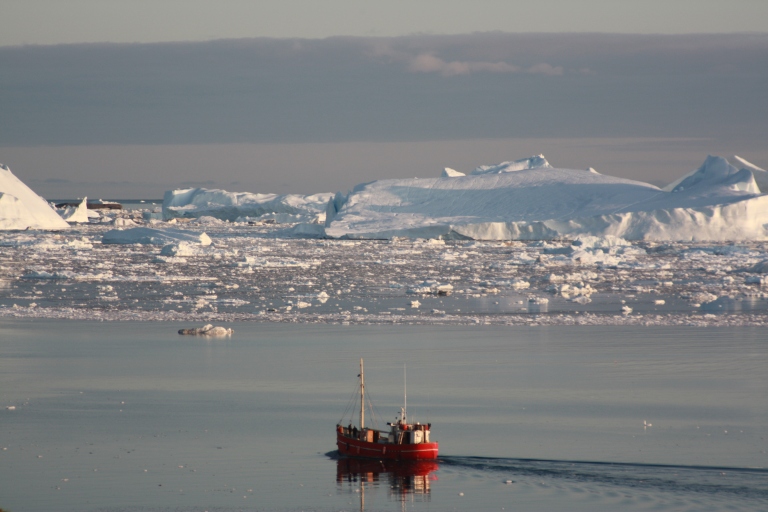
Warming Arctic, weather extremes round the globe
And rising sea level is not the only worrying consequence. The changes in the Arctic are making the jetstream slower and wavier. And that is a key influence on our weather, way beyond the Arctic. Extended periods of dry, wet or cold conditions, extreme heatwaves such as those experienced in the Pacific North-West of the USA this year, record-shattering temperatures of more than 40C even in Europe – these extreme weather events seem to have their origin in the Arctic. More heatwaves, more drought, more frequent flooding will become the new normal.
Ocean circulation, another key factor, is changing with the influx of freshwater into the salty ocean.
1.5°C must be the upper limit
These global impacts from the melting of the world’s ice can be slowed, or even averted if the increase in global temperatures is kept close to the Paris Agreement’s 1.5°C target, entailing 50% global CO2 reductions by 2030, the cryosphere report argues.
Measured against that, the outcome of COP26 is woefully inadequate.
“Cryosphere science points to about 1.5°C, or around 450ppm CO2 concentrations as upper guard rails to prevent dangerous human interference in the Earth’s cryosphere and therefore, in the global climate system,” says Julie Brigham-Grette, former chair of the U.S- Polar Research Board.
“It is important that the world face reality, and accept that the time for putting other considerations before emissions reductions is well past, because we cannot delay or negotiate with the melting point of ice,” said Figueres, who led the UN climate body between 2010 and 2016.
The State of the Cryosphere Report is to be published annually from now on to “take the pulse” of the cryosphere, ranging from ice sheets, glaciers and permafrost to sea ice and the polar oceans – which, the scientists note, are acidifying far more rapidly than warmer waters.
From the Arctic to Polynesia
One of the report authors and a lead author of the IPCC report on ocean and cryosphere German meteorologist Dirk Notz from the University of Hamburg, outlined the dramatic decline of Arctic sea ice in a remote presentation to the COP26 Cryosphere Pavilion. Given that an ice-free Arctic in summer will soon be a regular occurrence, he said for first time we could now say with great certainty that it is “too late to still protect one of the most amazing landscapes of our planet”.
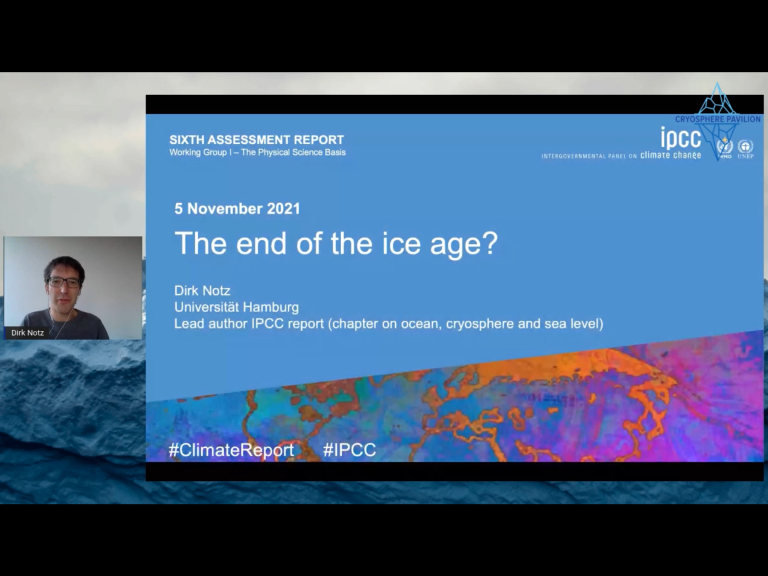
He described what was happening in the high north as a warning for many other parts of the climate system. “It is too late”. That, he warned, is a message that will come more and more often, although we can still influence developments with emissions cuts.
The event, organised by the Clean Arctic Alliance to focus attention on the possibility to cut climate-harming black carbon emissions from shipping, brought together speakers from the Inuit communities of the Arctic, and Tonga, an archipelago of small islands in the southern Pacific. In a talk “Coral and Ice – same future”, Major Siaosi Kaho from the Tongan Embassy in London stressed cultural similarities between his people and Arctic indigenous communities seeking to live in harmony with the environment, their livelihoods threatened by climate change. When reefs bleach and die, he said, it was as if the islanders lost part of themselves, much like Arctic communities losing ice. His aim was to stress links, with a view to “building momentum for climate action.”
He stressed the short time window still available to keep to the all-important 1.5°C target.
“We need more than voluntary action to save our coral and ice”, he insisted.
Fakafetai lasi Tuvalu. One Ocean! This powerful installation at COP26 says it all. The melting cryosphere flows into the #Ocean which has nowhere else to go but up – be it along the shores of #Tuvalu, Bangladesh, Miami or Shanghai. Please stop exporting and burning fossil fuels. pic.twitter.com/BlNDv6F7iZ
— Peter Thomson (@ThomsonFiji) November 10, 2021
Climate justice sadly lacking
Developing nations hit by rising waters and an increase in extreme weather events, with floods, droughts, food shortages, need money to adapt and secure their future in a world that will continue to warm even if that 1.5°C goal is achieved.
Small wonder that they were not pleased at the outcome of COP 26. The funding originally promised for 2020 – which will only be a drop in the rising ocean anyway – is still not going to materialise before 2023. The agreed goal of doubling funds for adaptation has been scaled back to just “increase”. And wealthy countries again blocked moves to initiate a loss and damage fund, agreeing only to start a “dialogue” to talk about “arrangements for the funding of activities to avert, minimise and address loss and damage“.
Having experienced the devastating floods that played havoc with our region of wealthy Germany this summer and the huge, ongoing challenge of repairing the damage and making the rebuilt regions resilient against future developments, I feel with all those in less fortunate parts of the world endangered by the emissions our industrialised countries have caused, who are begging desperately for funding to secure their livelihoods – and lives.
Half-way through the COP, the IEA was looking to a possible 1.8°C rise as a major step forward, with 1.5°C still remaining the target.
Climate Tracker updated the figures, including all the pledges and promises and came up with a sobering 2.4°C.
I would love to have seen my old home town becoming the “new Paris”, the location where the nations of the world signed the agreement to save the planet. Alas, I still see no signs that we are on the 1.5 track. Yes. Change is in the air. Renewables are on the up. Fossil fuels may be on their way out. But the fundamental will to change our lifestyles, societies and economies a.s.a.p. to save the world for future generations is still not there – neither in the governments of the key CO2-polluters, nor in the masses in the wealthy developed world, still unwilling to give up or even modify anything in their comfortable lifestyles for the sake of somebody else.
A recent poll suggests that although 78 percent of those from around the world surveyed said they were concerned about the climate crisis, almost half — 46 percent — said they didn’t feel much of a need to change their own habits. They expected their governments to take action instead. So can the transition happen fast enough? As they say in my native Scotland: “A hae ma doots”. (Translation: I have my doubts).
Related stories from around the North:
Canada: Continued sea ice loss could alter food web for some Arctic marine predators, says Canadian study, Eye on the Arctic
Finland: “If we lose the Arctic, we lose the globe,” says Finnish president at UN Climate Summit, Yle News
Greenland: Greenland to join Paris climate agreement, Eye on the Arctic
Sweden: Sweden’s environment minister ‘fairly happy’ with agreements from COP26 climate meeting, Radio Sweden
United States: New research shows how Alaska subsistence harvesters are having to adapt to climate change, Alaska Public Media

